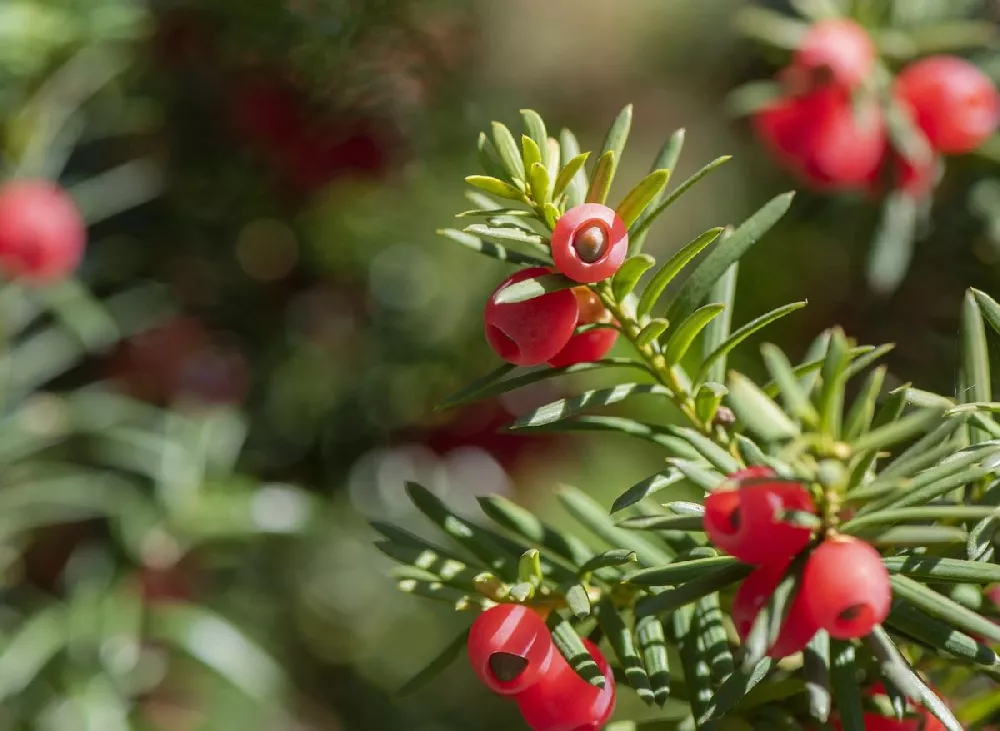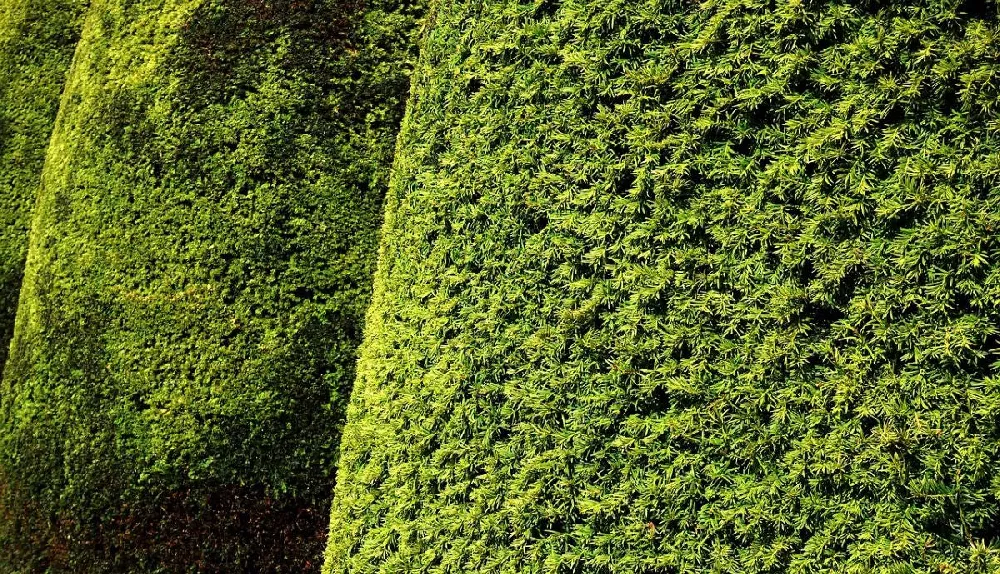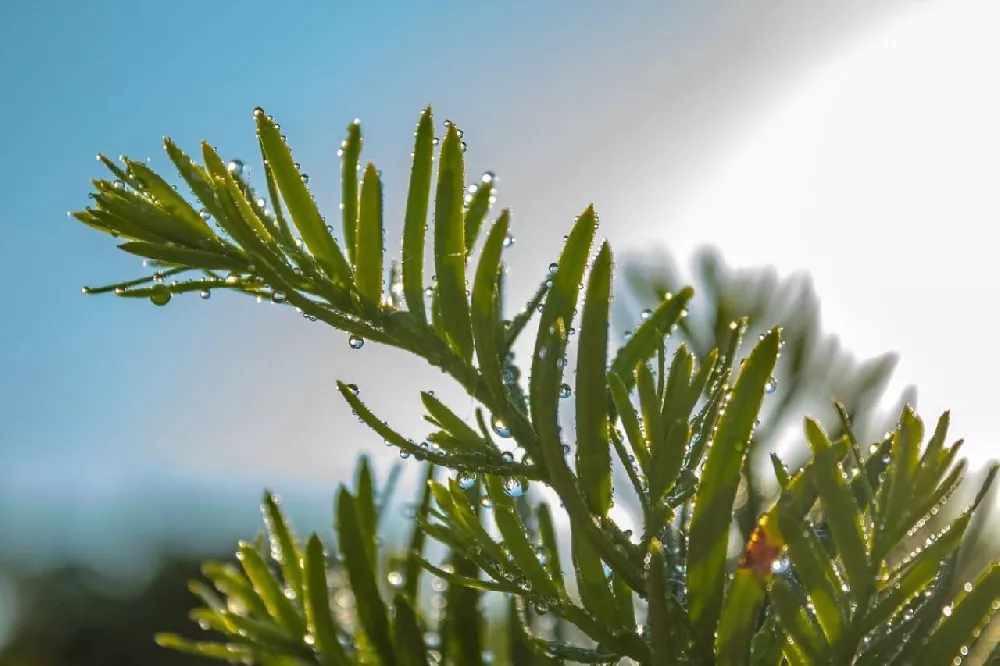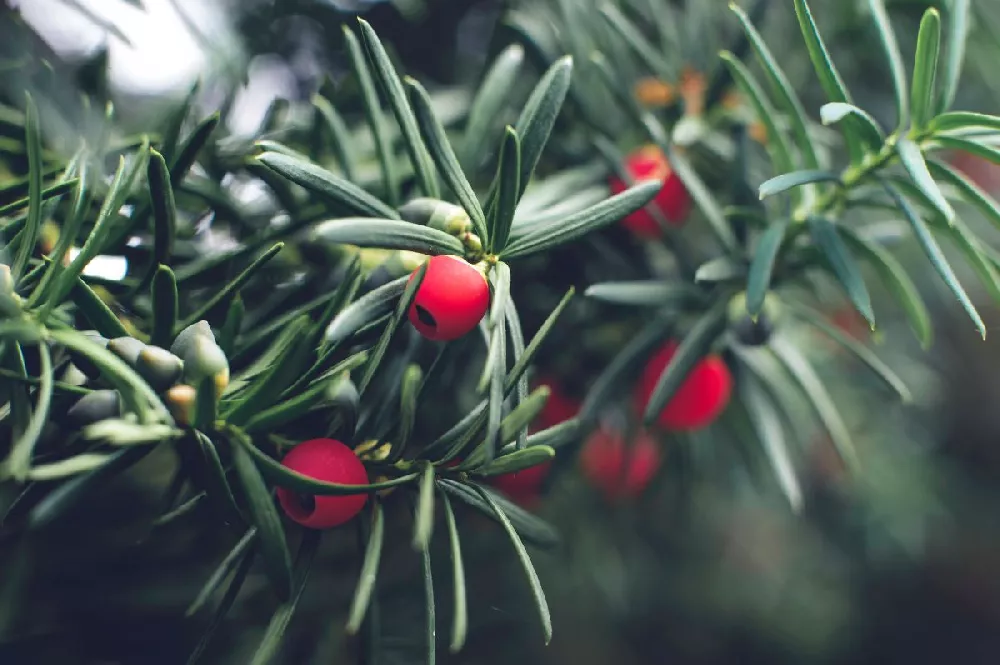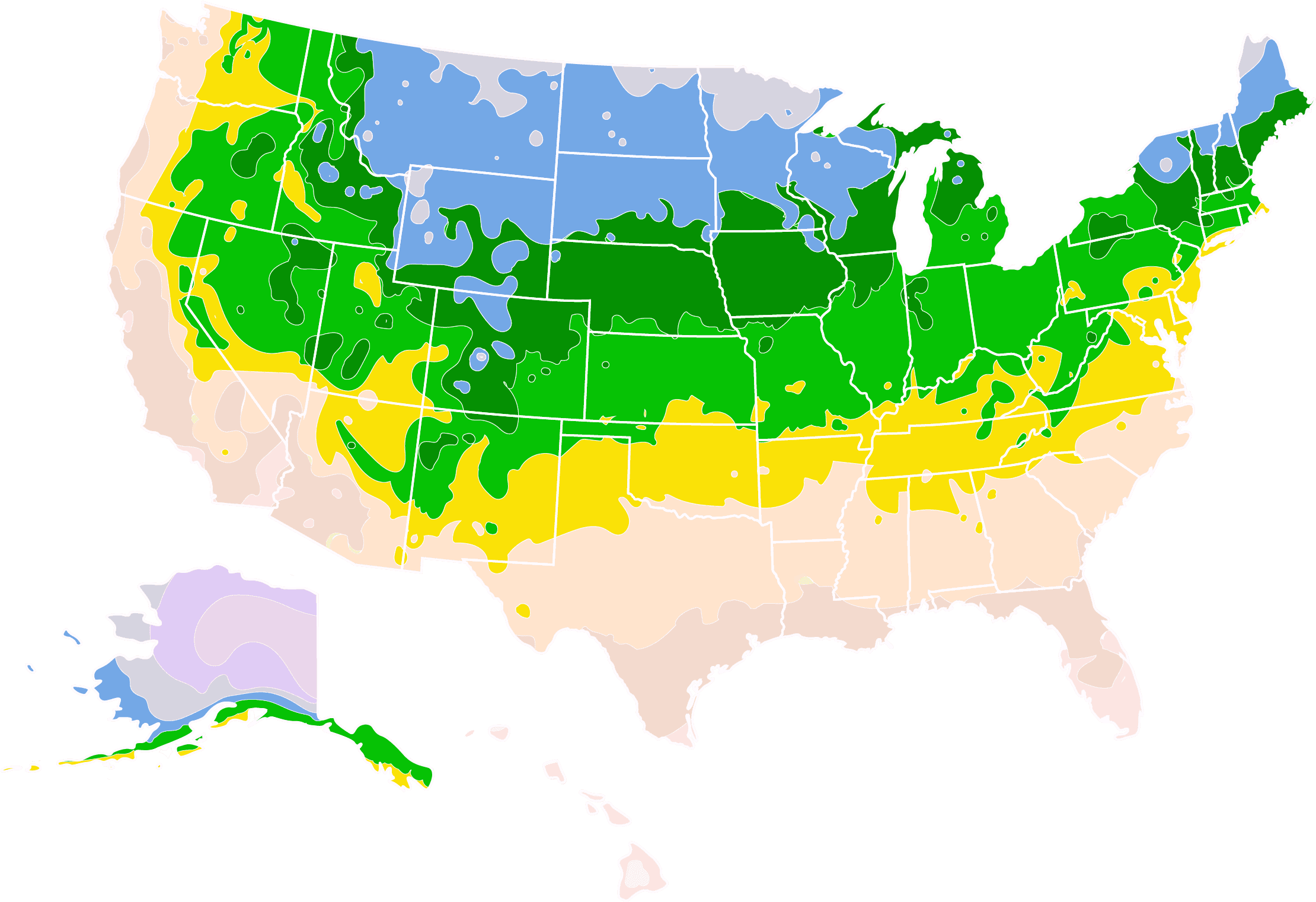- Home >
- Houseplants >
- Hicks Yew Tree
Hicks Yew Tree for Sale - Buying & Growing Guide
- Ships in 1-2 days
- 1-Year Warranty Eligible
- Pots or accessories are not included unless specified in the product options.
Shipping Details:
Once your order is shipped, you’ll receive an email with a tracking number and estimated delivery date. Most orders ship immediately, but some items are seasonal and may only ship in spring or fall. These products are noted on the website.
The Hicks yew tree, or Taxus x media 'Hicksii,' is an excellent evergreen shrub option that grows consistently with an unmistakable upright columnar shape but responds well to trimming and shaping, too. Throughout the entire year, the Hicks yew tree holds dark green needles that create a fine and lustrous texture. In fall and winter, this plant holds bright red fruits that are incredibly eye-catching, bringing vibrance to your garden even during the coldest parts of the year.
- This tree grows with a consistent columnar shape.
- The foliage of a Hicks yew tree is dark green and lustrous.
- In fall, this plant holds bright red berries.
Plant Care
Sunlight

The Hicks yew tree can grow in full sunlight and considerable amounts of shade.
Watering
This plant is often drought tolerant. Water it about once per week during hot spells.
Fertilizing

Feed with a balanced fertilizer in spring and repeat feedings once per month throughout the growing season.
Planting and Care
Planting instructions
The Hicks yew tree is adaptable to many planting locations, as it can survive in many soil types and in light conditions that range from full sun to just a few hours per day. To plant a Hicks yew tree, dig a hole that is as deep as the root ball is tall and about twice as wide. If your goal is to create a hedge using multiple Hick yews, you should plant them just a few feet from one another since this plant is both small and slow growing.
Watering and nutrients
Water your Hicks yew tree about once per week during the establishment period. Once this tree is established, it will not need much water and will be drought tolerant as well. The only time you’ll need to water a mature Hicks yew tree is during the hottest parts of summer, at which time you should water about once per week. Start feeding your Hicks yew with a balanced fertilizer each year in spring and repeat the feedings each month.
Pollination
As is true for all yew trees, the Hicks yew tree comes in male and female versions, and you will need both if you want to enjoy looking at this plant’s bright red fruits. If you plant a male and female near enough to each other, the plants will allow the wind currents to carry pollen from one plant to another. Then, upon successful pollination, the female plant will begin developing the bright red fruits that boost this plant’s fall and winter appeal.
Pruning
The best time to prune a Hicks yew tree is during the late winter and early spring months. During that time, you should remove any branches that are dead, damaged or diseased. You can also trim the outer foliage of this plant to shape it or to encourage denser foliage growth. However, you should never shear this plant too much as it will not resprout new growth from old wood. With that said, your Hicks yew will have a neat columnar shape even if you don’t prune it.
Pests, diseases and animals
Generally, the Hicks yew tree is not highly susceptible to pests and diseases, as is true of many yews. However, there are some issues this plant can encounter. For instance, when this plant grows in waterlogged soils or soils that are highly alkaline, it can experience foliage yellowing and dieback. Excessively wet soil can also lead to root rot for this plant. Insects such as mealybugs and black weevils can cause infestations, and deer may also choose to browse on your Hicks yew tree.
Achieving maximum results
The Hicks yew tree can create an excellent hedge if you know how to plant it correctly. Remember that this plant is small at maturity, about three to four feet wide, and has a slow growth rate as well. This means that you should plant your shrubs about three feet away from one another at most. After your Hicks yews have grown together, you can begin to shape your hedge. While it is unwise to remove foliage all the way back to old wood, this plant is generally very responsive to shearing and will form neat shapes easily.
FAQs
Where does the Hicks yew tree come from?
The parent plant of the hicks yew tree is a hybrid plant called Taxus x media, which arose from a cross between the English yew and the Japanese yew. This initial cross is believed to have occurred in the 1900s. Following that original hybridization, a nurseryman named Henry Hicks created the Hicks yew tree cultivar, Taxus x media 'Hicksii,' in Flushing, NY.
Is the Hicks yew tree poisonous?
Technically, the red flesh of the Hicks yew tree's fruit is edible. However, you should never attempt to eat any part of this plant. All parts of the Hicks yew, other than the fruit's flesh, are incredibly poisonous and can be deadly upon ingestion. Both humans and animals will have a horrible reaction if they eat a part of the Hicks yew tree which is why you should be careful of where you plant it and monitor any children and pets that go near this plant.
Can the Hicks yew tree tolerate shade?
The Hicks yew tree is quite adaptable, which includes an impressive tolerance for a wide range of light settings. Like other yews, this cultivar will grow well in full sunlight and partial shade. However, the Hicks yew tree can often survive in conditions that are closer to full shade. While this plant will need at least a few hours of light per day, it is a good option for the shadier parts of your yard.
Compare Similar Products
You can't add more Product Name - Product size to the cart.
OK